WDYWFM |
BAND INDEX |
WDYWFM |
BAND INDEX |
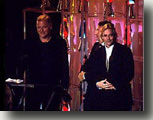
On January 17, 1996 after over three decades of being one of the pioneer bands in Rock Music, Pink Floyd was inducted into the Rock and Roll Hall of Fame. From their beginnings in small venues to the giant concerts of today, Pink Floyd has always brought to the fans a innovative style of music that by passes time.
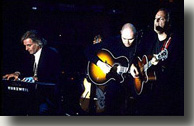
Billy Corgan of Smashing Pumpkins inducted Pink Floyd, the archetype mystical performance rock band, into the Rock and Roll Hall of Fame, describing them as the "ultimate rock and roll anomaly".
Missing from the group on this memorable night were Syd Barrett and Roger Waters, who was "sick".
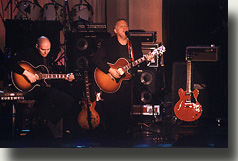
After accepting the award, Corgan joined Pink Floyd members David Gilmour, and Rick Wright for a performance of "Wish You Were Here."
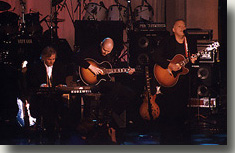
Pink Floyd has revolutionized the way that the world looks at rock music. By creating their own powerful sound, along with wonderful lyrics, the band has painted imagery in the mind of their public through four decades. The message of Pink Floyd has been varied, but the soul-filled meaning behind it has always remained intact.
It was Pink Floyd's presentation of music and lights at London's Roundhouse in 1966 that brought psychedelia to the U.K. and prompted the British press to coin the term "underground rock. " With the music of Pink Floyd, rock and roll entered a new dimension of lyricism and music that would influence generations of bands to follow. Pink Floyd was also the first band to incorporate light shows and photo effects in their live shows, creating a precedence that has not been equaled, by any band.
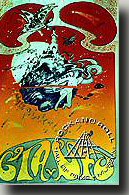
Singer/guitarist Syd Barrett provided Pink Floyd with its early material, including the British hits "See Emily Play" and "Arnold Layne." He left the group in 1968, only to become rock's most legendary hermit (whose 1968 departure inspired "Shine On You Crazy Diamond" from "Wish You Were Here.") The remaining members, vocalist and bassist Roger Waters, keyboardist Rick Wright and drummer Nick Mason, along with Barrett's replacement David Gilmour, went on to become one of the most successful rock bands of the Seventies.
Their 1973 release "Dark Side of the Moon" hit Number One on the Billboard charts and ultimately broke all records by remaining on the Top 200 album charts for a staggering 741 weeks. Success continued into the Eighties with The Wall, Waters' epic about alienation, which spent over two years on the charts and inspired a movie and a mammoth tour with one of the most celebrated stage shows in rock history.
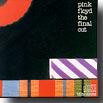
In 1983, amidst the rumors of turmoil in the band, Pink Floyd released "The Final Cut". The name so ironically characterized the present status of the band. Some people, the rest of the band included, considered it to be a Waters "solo" album. On this album, no song was co-written with another band member. Indeed, much of the sound and emotion that jelled the band together seemed to be missing.
After a tour and a U.K. mini-movie, no one heard from the band for two years. Then in late 1985, Waters left the band and immediately sued the remaining band members for exclusive rights for all the works of Pink Floyd, including the name. The fight was long and messy, lasting over a year. Finally, in 1987, a decision was made. The case was settled out of court when Roger Waters agreed to the settlement David Gilmour offered, he was to receive rights to The Wall and royalities for works he contibuted to.
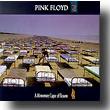
In September of 1987, Pink Floyd under the leadership of David Gilmour, with Nick Mason and Rick Wright, released "Momentary Lapse of Reason". A very successful tour followed, and it seemed that the band was as popular as ever. Gilmour, Mason and Wright brought Pink Floyd back into the limelight proving with out a doubt that Pink Floyd was alive and well, with or with or Roger Waters.
In 1994, Pink Floyd released "The Division Bell", which went to No. 1 on the American charts. The Division Bell tour was one of the largest and most loved tours in the history of Rock and Roll. The band noted for its generosity, gave millions to charities, from its proclaimed concerts at Earl's Court in London, England. The band released the Division Bell album, and started the tour on March 30, 1994 in Miami, Florida. The Division Bell tour was a long and successful one.
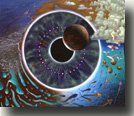
Pink Floyd released an album of live music from The Division Bell tour entitled P*U*L*S*E. This album repesents the joining of two great albums The Division Bell, and Dark Side of the Moon, which was played in its entirety during The Division Bell Tour. A video by the same title, a must for all Pink Floyd fans, is available. Pink Floyd is currently working on a new album and hopefully will begin to tour soon.
The Rock And Roll Hall Of Fame lists the following in their top 500 songs that shaped Rock in Roll:
Pink Floyd - Another Brick In The Wall, Part 2
Pink Floyd - Money
Pink Floyd - See Emily Play
From the Rock and Roll Hall of Fame exhibit, The Wall
In the old days, pre-Dark Side of the Moon, Pink Floyd played to audiences which by virtue of their size allowed an intimacy of connection that was magical.
However, success overtook us and by 1977 we were playing in football stadiums.
The magic crushed beneath the weight of numbers, we were becoming addicted to the trappings of popularity.
I found myself increasingly alienated in that atmosphere of avarice and ego until one night in the Olympic Stadium, Montreal. Some crazed teenager fan was clawing his way up the storm netting that separated us from the human cattle pen in front of the stage, screaming his devotion to the "demi-gods" beyond his reach.
Incensed by his misunderstanding and my own connivance, I spat my frustration in his face. Later that night, back at the hotel, shocked by my behavior, I was faced with a choice. To deny my addiction and embrace that "comfortably numb" but "magic-less" existence or accept the burden of insight, take the road less traveled and embark on the often painful journey to discover who I was and where I fit.
The Wall was the picture I drew for myself to help me make that choice.
Roger Waters
Summer 1995
The Wall
Timeline
JULY 6, 1977- Pink Floyd plays the final show of its In the Flesh tour at Olympic Stadium in Montreal. After the show, Roger Waters begins to conceptualize The Wall.
Installation designed by Jonathan ParkJULY 1978- Waters presents The Wall to Pink Floyd for the first time. Recording begins shortly thereafter.
NOVEMBER 30, 1979-The Wall is released.
FEBRUARY 7-11, 1980-The Wall is performed on stage for the first time, at the Sports Arena in Los Angeles. Pink Floyd will perform The Wall live a total of just 29 times.
SEPTEMBER 7, 1981- Shooting begins on the movie version, written by Waters and directed by Alan Parker.
JULY 14, 1982- The movie has its world premiere at the Empire Theatre in London.
JULY 21, 1990- Roger Waters performs The Wall at Potzdamer Platz in Berlin. Joni Mitchell, Van Morrison, Marianne Faithfull, Thomas Dolby and others take part in the performance, which is a benefit for the World Memorial Fund for Disaster Relief.
Animation design by Gerald Scarfe
This exhibit was funded in part by Sony Music Entertainment Inc.
From the collection of the Rock and Roll Hall of Fame and Museum.